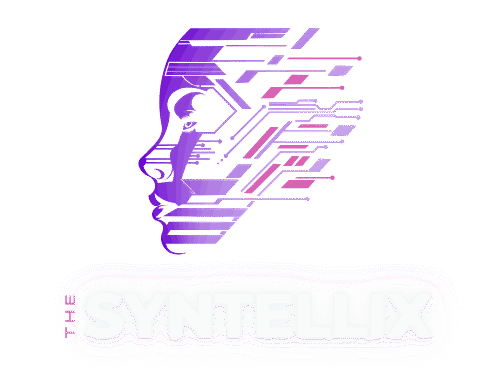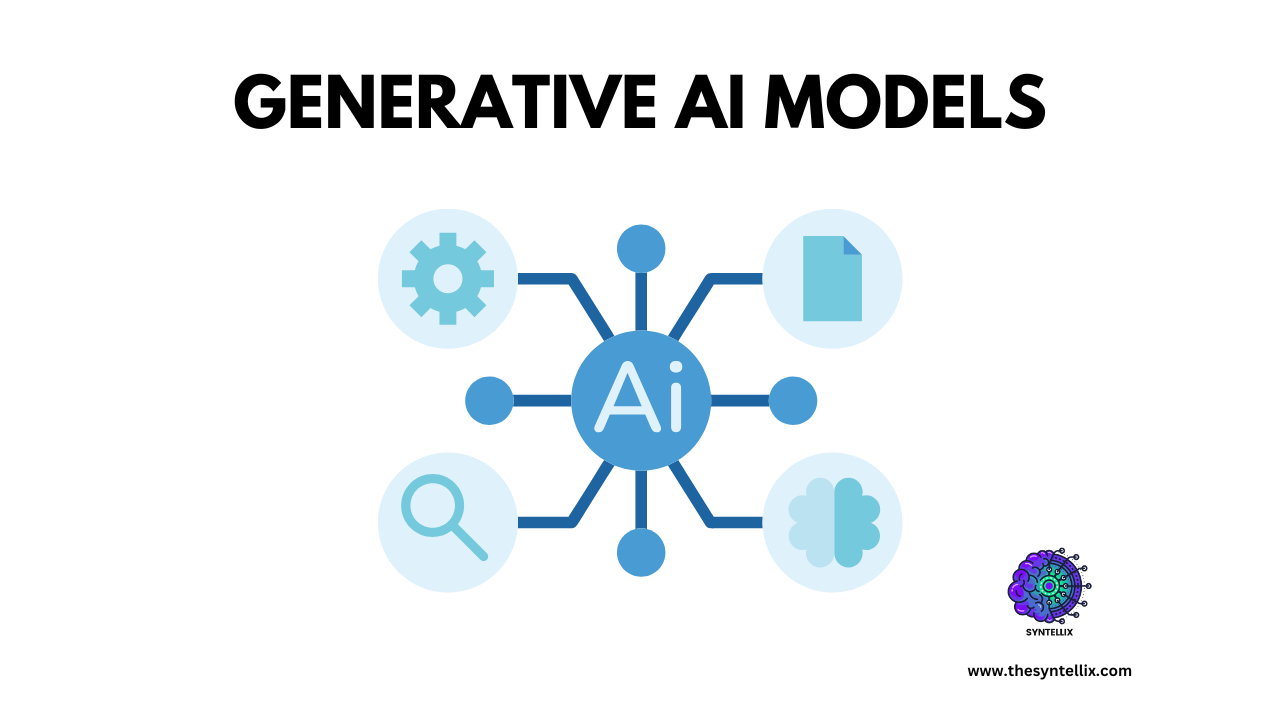As we all know, in a few years, Generative AI has become the magical tool we are using everyday. From writing stories, generative wonderful realistic images, coding apps, to composing music, Generative AI have change the way how we create, think and communicate. In this blogpost we will explore some most popular generative AI models that are doing great, what they do, how they work, and why they are important nowadays. Lets dive in!
What are some popular generative AI model?
In simple terms, Generative AI models are smart computer programs, that can create new thing such as text, image, sound, or videos based on the data they have trained. Unlike traditional AI which just sort and label data, Generative AI creates new content that look almost similar to human like content.
Generative AI models learns by studying huge amount of information such as books, pictures, sound or code so that they can come to know that how to create similar thing on their own. You can think of them like very advanced digital students that practice over and over until they get really good at making new content.
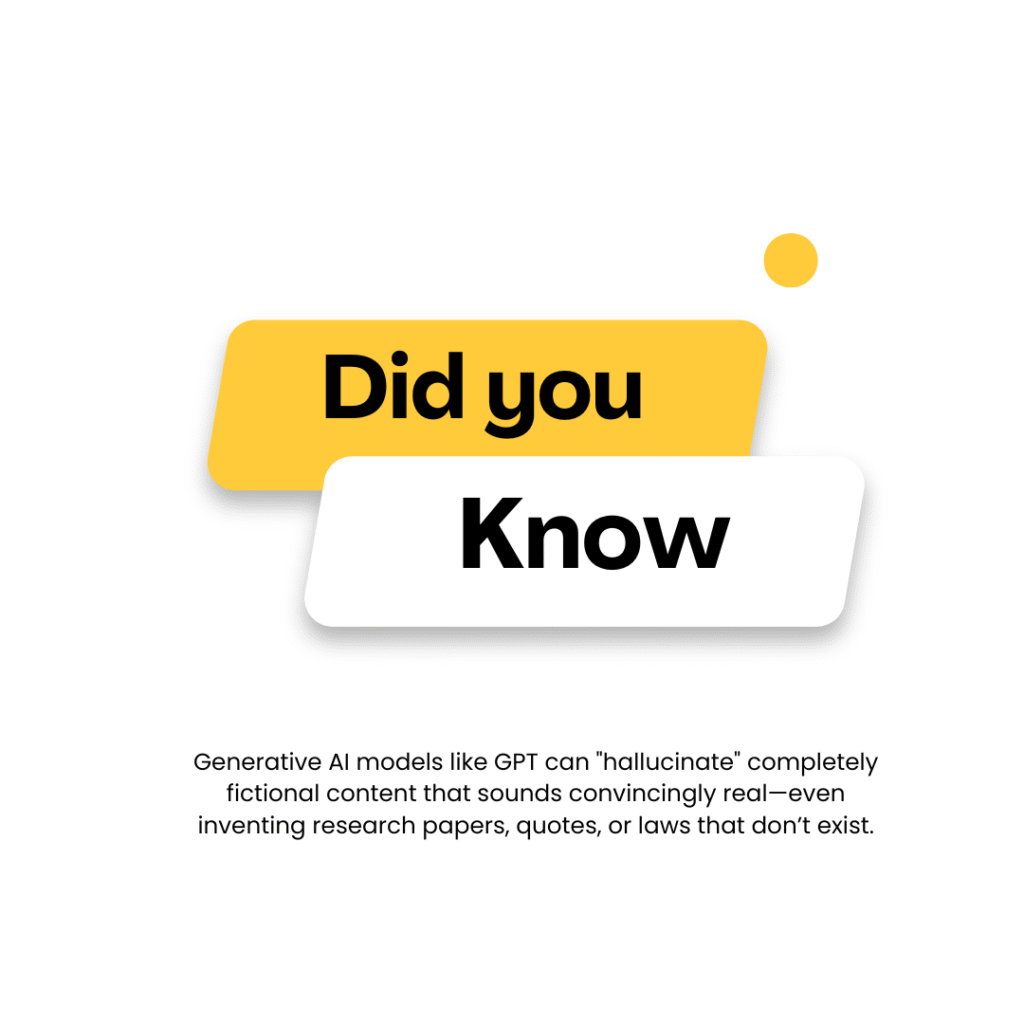
Some of the most popular AI models are discussed below:
ChatGPT
ChatGPT is an advanced artificial intelligence model developed by openAI that can understand and generate human-like text. It is designed to have natural conversations, answer questions, write content, summarize information(even document or audio, video input), and even can assist you with tasks like coding or data analysis.
ChatGPT can adapt its responses based on content that makes it more flexible and helpful. Its productivity and creativity is growing its importance across various industries that helps businesses and individuals to work more efficiently.
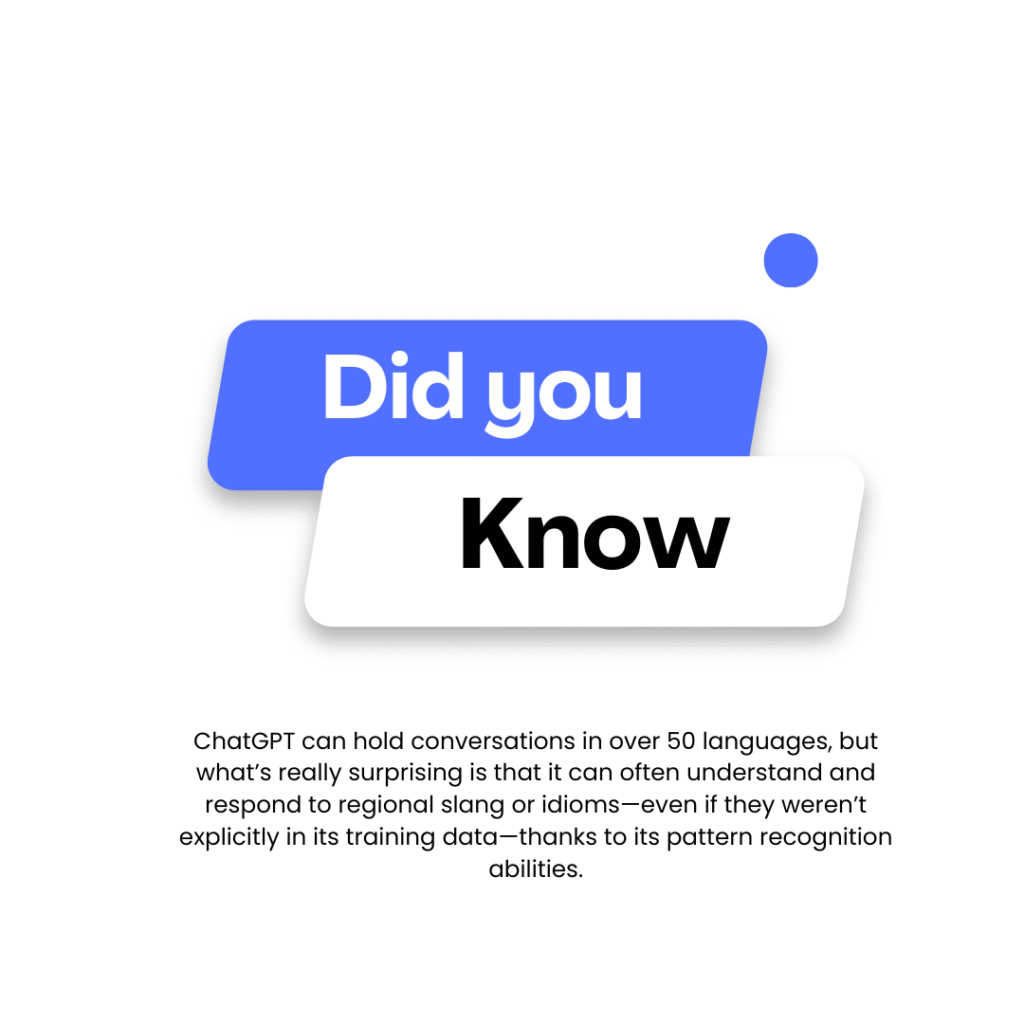
Claude
Claude, developed by Anthropic, has emerged as one of the most prominent generative AI models in today’s competitive landscape. Named after Claude Shannon—the father of information theory—this model reflects Anthropic’s unique approach to building large language models grounded in safety, constitutional AI, and interpretability.
What sets Claude apart is its ability to maintain coherence and relevance across long-form conversations, even those stretching over tens of thousands of tokens.
This makes it particularly strong in applications like writing assistance, legal or technical analysis, and collaborative brainstorming where depth and continuity matter. It’s also designed to be more “steerable,” allowing users to guide its tone, behavior, or role more effectively compared to many other models.
Unlike some of its contemporaries that focus solely on scaling up performance, Claude emphasizes alignment and responsible behavior. The model is trained using Anthropic’s “Constitutional AI” approach, which relies on a set of guiding principles rather than reinforcement learning through human feedback alone.
This not only improves Claude’s ability to stay on-topic and behave appropriately but also makes it more transparent and controllable.
In practice, Claude often feels more stable and context-aware in long sessions, especially for professionals who need accurate, structured outputs over simple conversation.
While it may not always generate flashy or creative outputs like some models tuned for storytelling, it delivers on clarity, consistency, and ethical grounding—making it a trusted tool for enterprise and research-grade tasks.
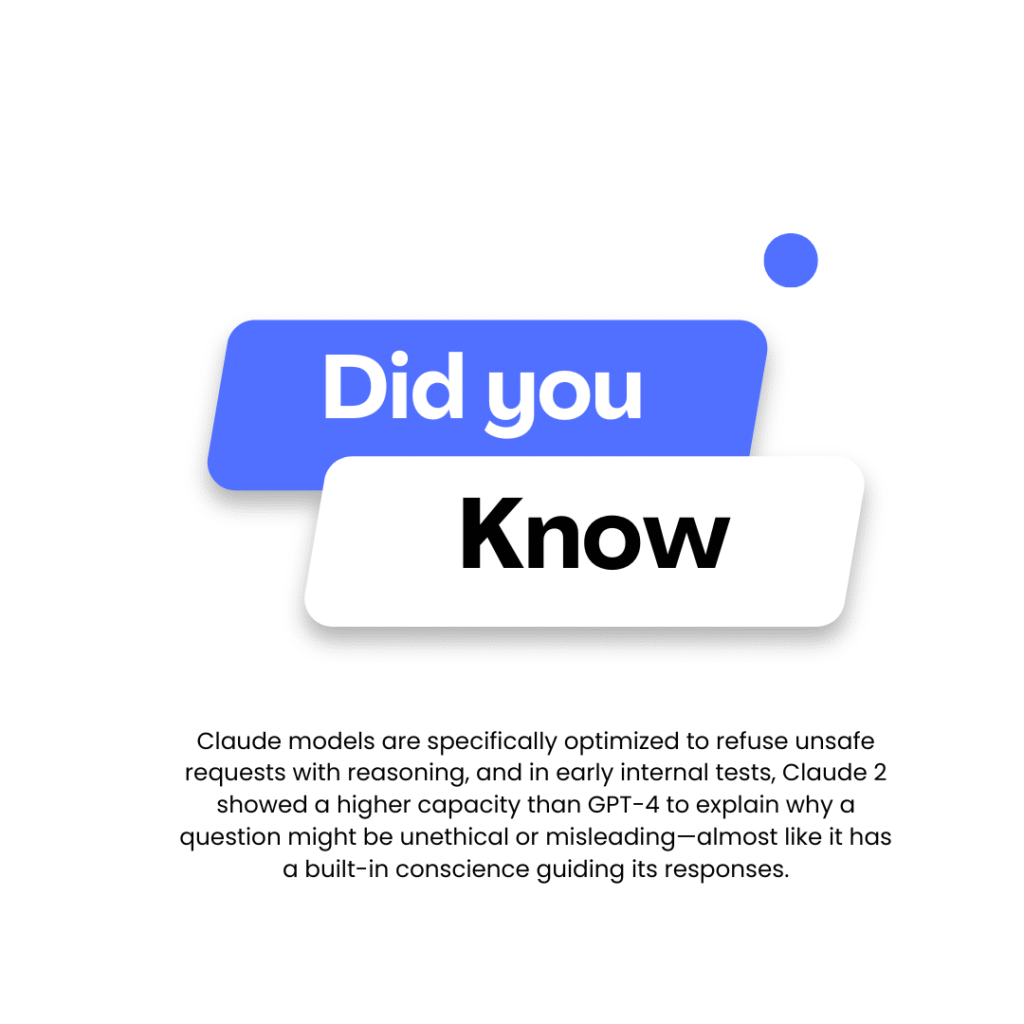
Gemini
Gemini, developed by Google DeepMind. What sets Gemini apart is how it was designed from the ground up to be natively multimodal, that means it can understand and generate not just text, but also images, code, and even audio with remarkable fluidity.
This holistic approach reflects a deeper understanding of how humans interact with information—through many forms, not just words. In real-world applications, Gemini demonstrates strong reasoning, coding, and problem-solving skills, often rivaling or surpassing other state-of-the-art models like GPT-4 in controlled evaluations.
What makes it especially appealing is how it integrates tightly with Google’s suite of tools, offering an AI that feels both powerful and naturally woven into the tech many already use daily.
From a trust and reliability standpoint, Gemini benefits from Google’s vast infrastructure and emphasis on safety, privacy, and scalability. Its training draws on diverse, multilingual, and multimodal datasets, aiming to avoid the narrowness that can plague other large models.
Unlike many generative AIs that treat coding, vision, and language as siloed abilities, Gemini treats them as interconnected skills, allowing it to solve complex tasks more holistically.
In the evolving race among foundation models, Gemini isn’t just another competitor—it’s Google’s bold statement on what the future of AI should look like: collaborative, context-aware, and deeply integrated into how we think, create, and build.
It works by learning from different sources such as books, websites, movies, audios, videos to adapt the most useful and valuable information. Gemini’s ability to reason, analyze, and respond more naturally, makes it a powerful tool for businesses, educators, developers, and everyday users.
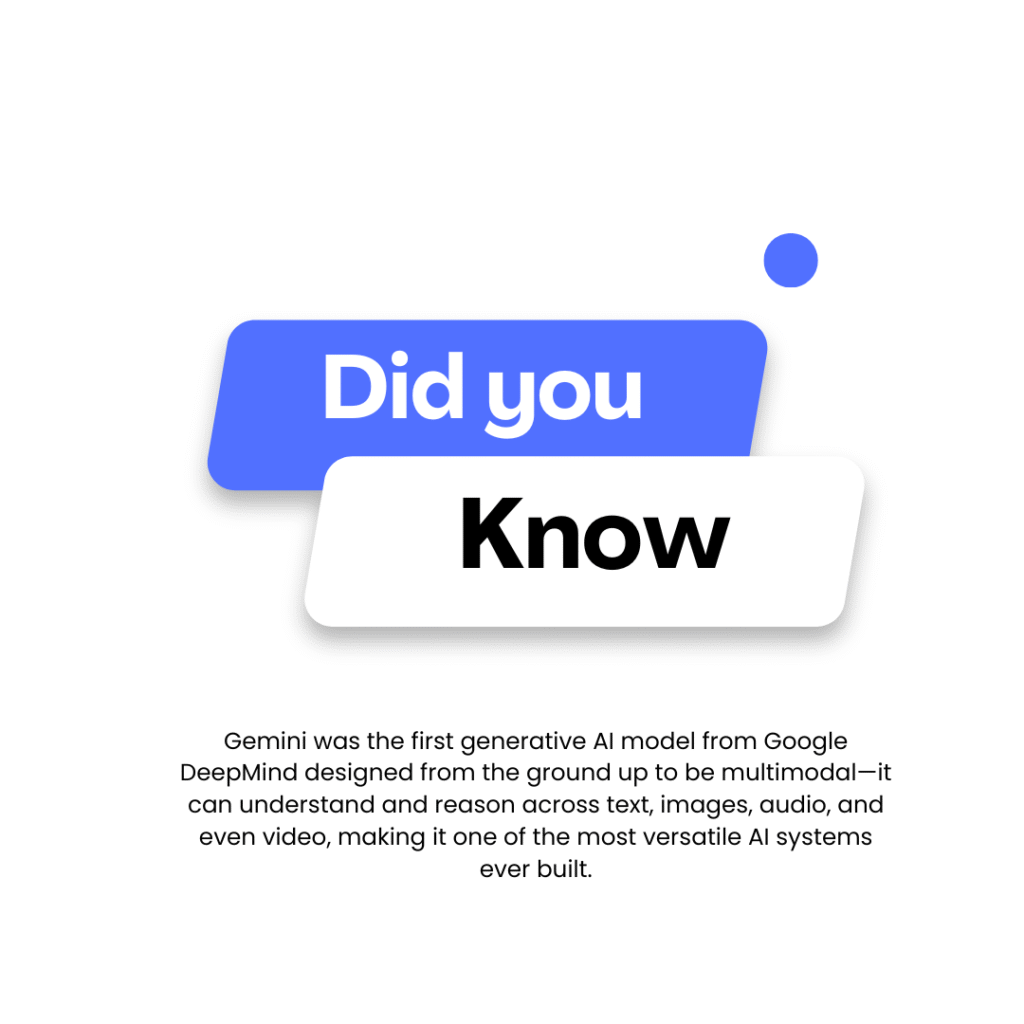
DALL-E
DALL·E is an AI model created by OpenAI that can turn your written descriptions into realistic images. In simple terms, if you type something like “a cat wearing a space suit on the moon,” DALL·E will generate a picture that matches this idea, even if it is something that no one has ever seen before.
It works by learning from millions of image-and-text pairs, so that it can understand how words relate to visual details. When you give it a prompt, it combines this knowledge to create a completely new image that fits with the description.
Its creativity is making it popular throughout designers, marketers, educators, and everyday users who wants to see how their creative thinking looks in reality.
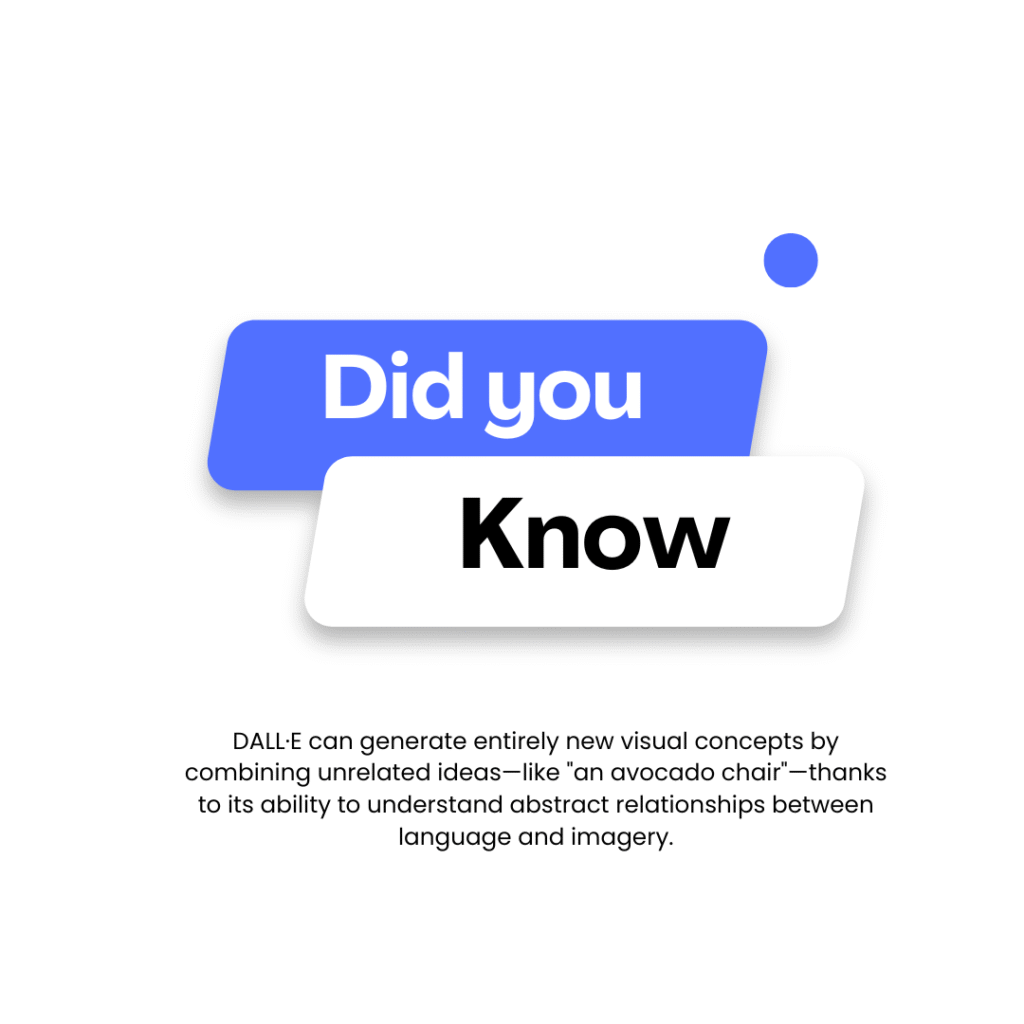
Midjourney
Midjourney is a powerful generative AI tool that can turn your text descriptions into stunning images. You simply type what you want to see—like “a futuristic city at sunset” and Midjourney will create a high-quality image that matches with your idea.
It works by using advanced machine learning trained on massive collections of artwork, photos, and styles from all across the internet. This helps it to understand how to combine colors, textures, and details in creative ways.
It is widely used by artists, marketers, game designers, and creators. As visual content becomes more important in digital storytelling and branding, tools like Midjourney are shaping the future of creative work.
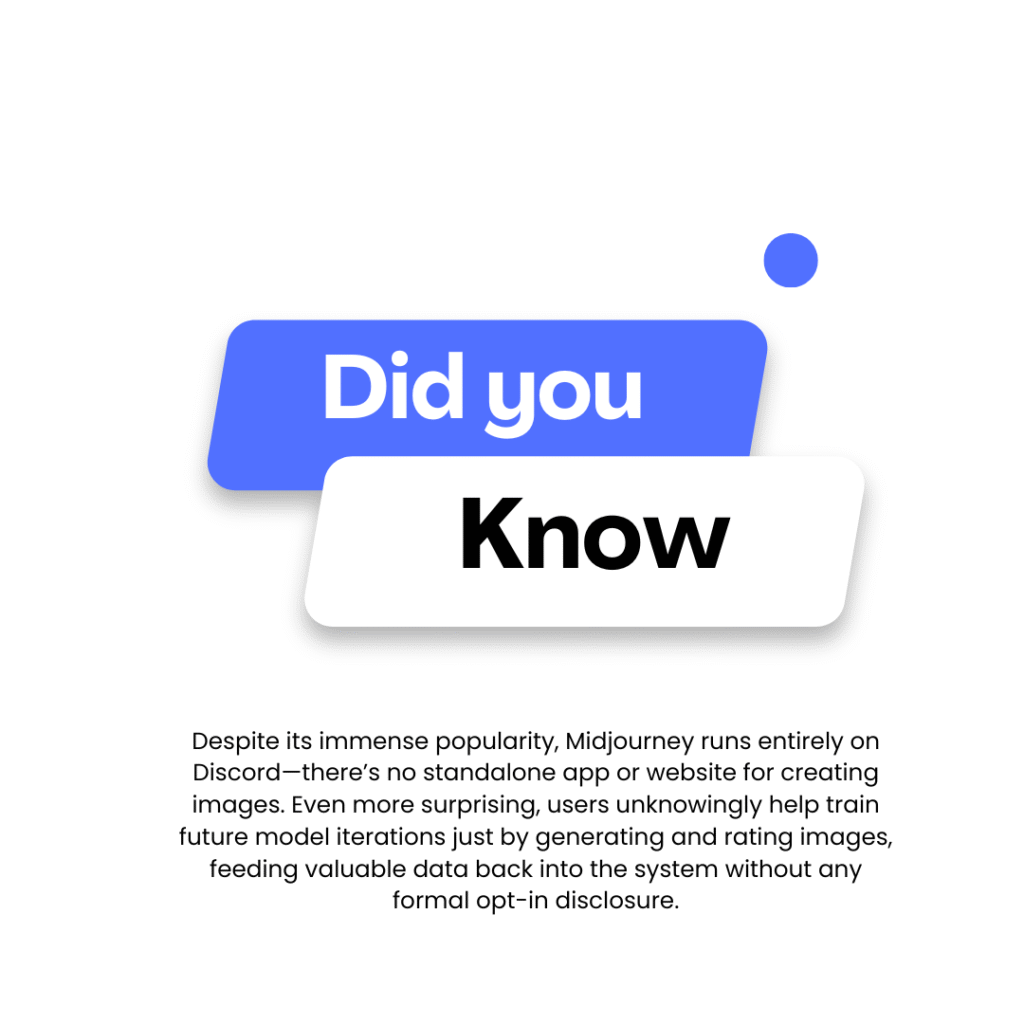
Stable Diffusion
Stable Diffusion is a powerful AI model that can turn your written descriptions into detailed, high-quality images. It ca generate what you can think in a creative way. It works by learning from millions of images and the text that describes them, so that it can understand how words connect to visual elements.
Unlike some other image-generation tools that run only on company servers, Stable Diffusion can be used on personal computers, which gives artists, designers, and developers more control over their privacy. This AI model matters because it makes creative image-making faster, more accessible, and more customizable.
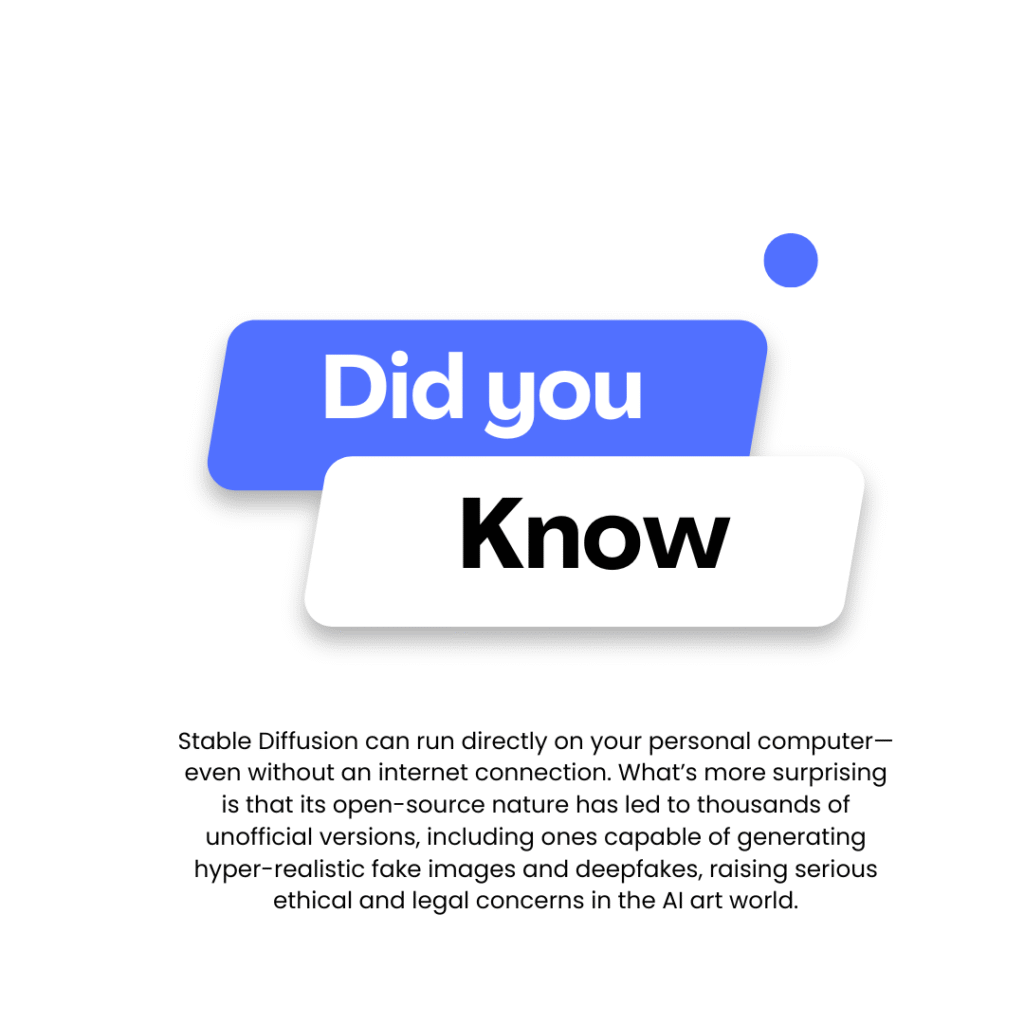
Mistral & Mixtral – Redefining Open-Source Generative AI
In the fast-growing world of generative AI models, Mistral AI has made a bold entrance with its compact yet remarkably capable models—Mistral and Mixtral. What sets these models apart isn’t just their performance, but their architecture and commitment to open access.
Mistral, the company’s flagship model, uses dense transformer design and is optimized for speed and efficiency, making it ideal for deployment in real-world applications without the massive compute costs seen with some closed models.
But where things get even more exciting is with Mixtral, a Mixture-of-Experts (MoE) model. Instead of activating the entire neural network for every task, Mixtral smartly routes inputs through only a few “expert” subnetworks at a time.
This allows it to deliver high-quality outputs with lower computational overhead—a breakthrough for developers who need both power and efficiency.
What’s more, the open-weight nature of both models has made them especially popular among startups, researchers, and developers who want to innovate without vendor lock-in. In a landscape dominated by big tech players, Mistral AI is proving that open-source generative AI can still punch above its weight.

LLaMA 3 by Meta AI
LLaMA 3 by Meta AI represents one of the most advanced open-source contributions to the generative AI space. Built with transparency and accessibility in mind, LLaMA 3 models are designed to perform on par with some of the most powerful proprietary systems—while remaining fully open to researchers and developers.
Meta has positioned LLaMA 3 as a strong foundation model for tasks ranging from natural language understanding to content generation and code completion, especially in multilingual and multi-domain settings.
What makes LLaMA 3 particularly valuable in the ecosystem of generative AI models is its balance between performance and openness. Unlike closed models like GPT-4 or Gemini, LLaMA 3 allows users to inspect, fine-tune, and deploy the model without licensing restrictions.
This has sparked a vibrant developer community around it, accelerating innovation in both academic and commercial applications.
Its architecture benefits from dense training on high-quality, diverse datasets, making it a powerful base for building chatbots, translation tools, and creative writing systems.
As generative AI becomes more central to modern tech stacks, LLaMA 3 ensures that open development continues to thrive alongside commercial giants.
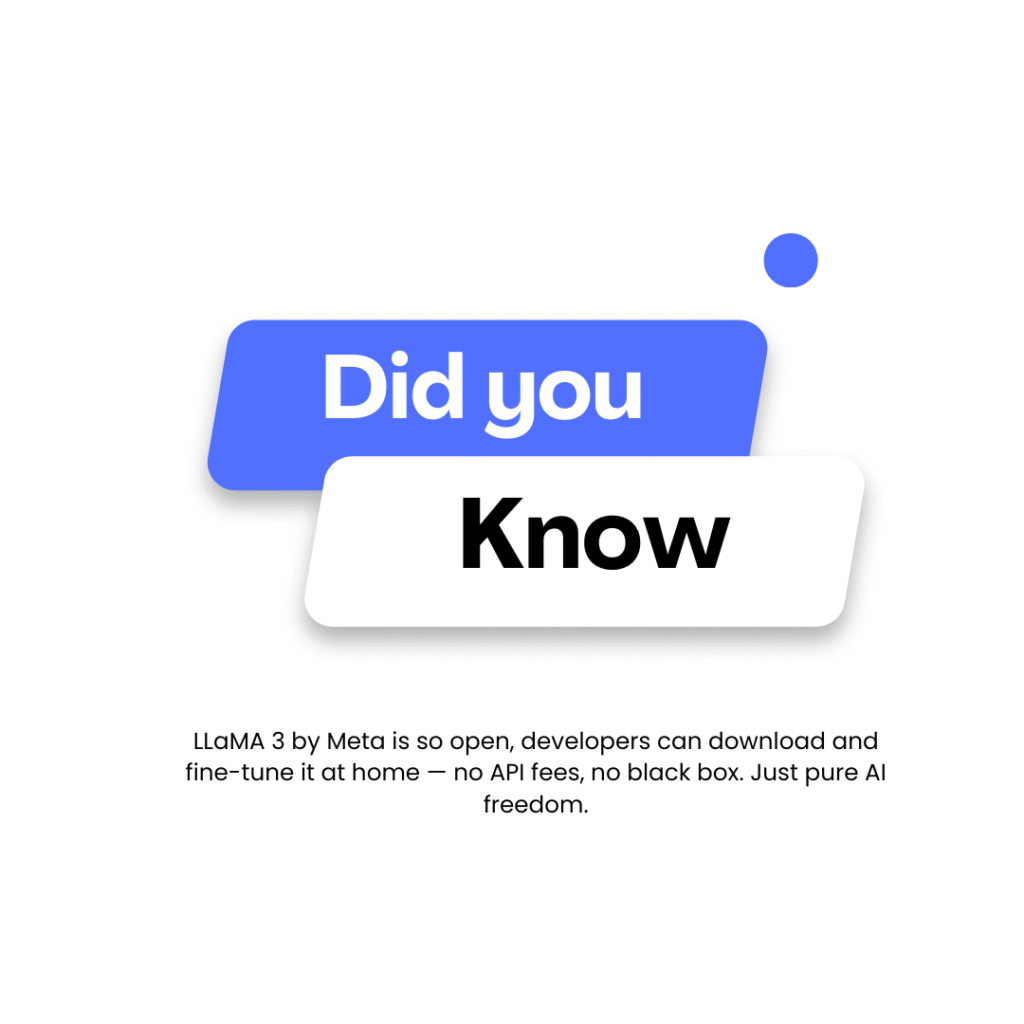
Janus-Pro – Tsinghua University
Janus-Pro, is a model developed by Tsinghua University, is a standout in the growing landscape of generative AI models, thanks to its dual-architecture design.
Unlike most large language models that rely solely on autoregressive or masked language modeling, Janus-Pro combines both approaches. This hybrid setup enables it to handle a wide range of language tasks with improved versatility—making it capable of both fluent generation and deep contextual understanding.
It’s not just an academic experiment; Janus-Pro has demonstrated competitive performance against leading models in reasoning, code generation, and multilingual comprehension.
What sets Janus-Pro apart in the realm of generative AI models is its open-source foundation coupled with cutting-edge training techniques.
It leverages a high-quality, large-scale training dataset and showcases how academic institutions can push innovation on par with major tech firms. Because it’s open-source, developers and researchers around the world can study, adapt, or build on it, encouraging transparency and collaboration in AI development.
In a space often dominated by closed ecosystems, Janus-Pro proves that open academic research can drive meaningful advances in generative AI.

Command R+
Command R+, is a generative AI model developed by Cohere, is quickly gaining recognition as one of the most efficient and reliable generative AI models designed specifically for retrieval-augmented generation (RAG).
What makes it stand out is its ability to seamlessly combine external knowledge retrieval with language generation. ChatGPT said:
Instead of relying solely on pre-trained data, it actively pulls in fresh, relevant information to generate responses that are both accurate and grounded in real context.
For users building search tools, chatbots, or enterprise-grade AI applications, Command R+ offers a practical edge in precision and relevance.
Another compelling aspect of Command R+ is its open availability for both research and commercial use, which is rare among high-performing language models.
Cohere has optimized it for scalability and cost-efficiency, making it ideal for real-world deployment in business environments where latency and cost matter.
In the broader ecosystem of generative AI models, Command R+ carves a niche by focusing on high-quality, retrieval-informed outputs—an increasingly vital capability as companies demand AI systems that are not only fluent, but also factual and context-aware.
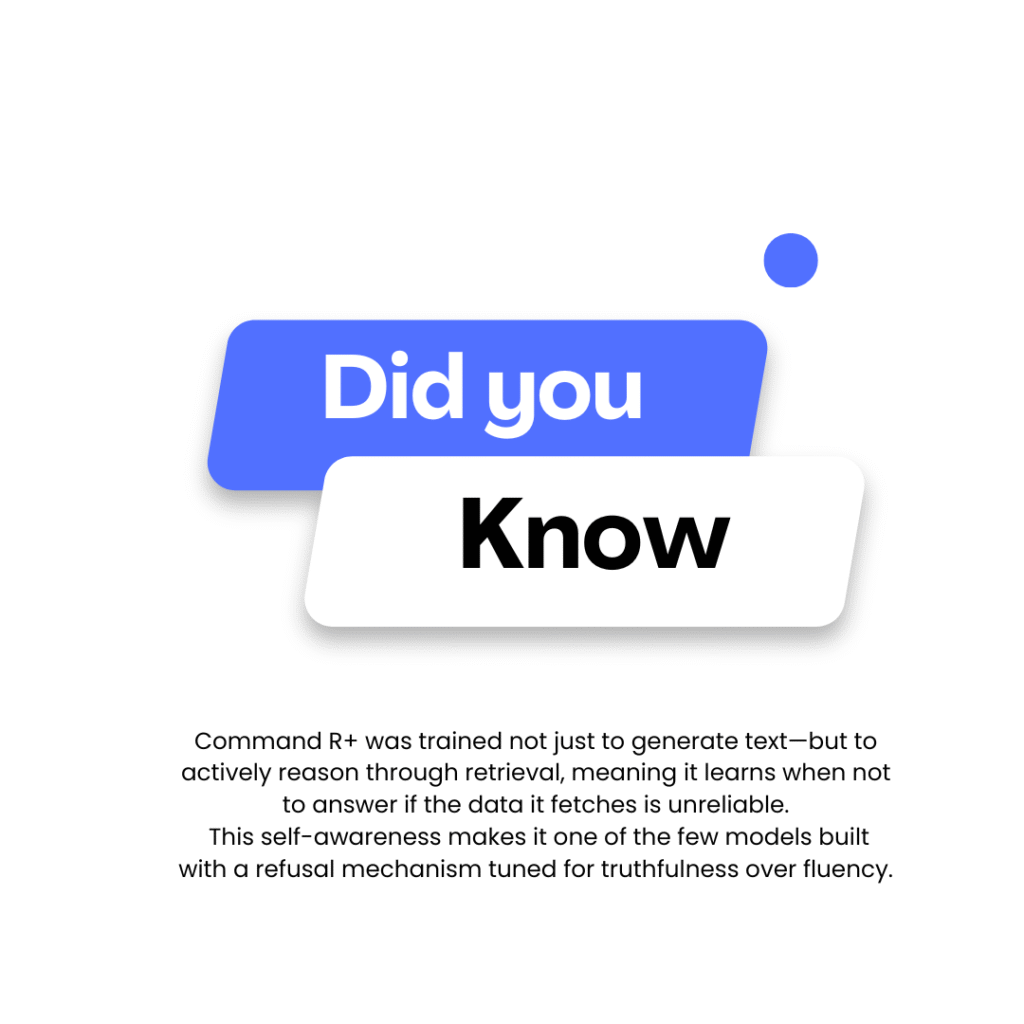
Conclusion
Generative AI models are transforming the way we create, communicate, and innovate. From GPT-4 text generation to DALL-E stunning visuals, these tools are pushing the boundaries of what can be possible. You can use the model according to your requirements.
Which generative AI model excites you the most? Let us know in the comments!
Useful resources
If you want to explore AI read my blogs here.
Frequently Asked Questions (FAQ)
What is the most popular generative AI?
GPT-4 by OpenAI is currently the most popular generative AI model due to its versatility and advanced capabilities.
What is the most common type of generative AI?
Text-based generative AI models, such as GPT-4, are the most common, followed by image generation models like DALL-E and Stable Diffusion.
What are the generative AI models used?
Popular models include GPT-4 (text), DALL-E (images), Stable Diffusion (images), MidJourney (art), and Whisper (speech).
Who is leading generative AI?
OpenAI is currently leading the field with models like GPT-4 and DALL-E, but companies like Stability AI and Google are also making significant contributions in artificial intelligence field.

Stay ahead of the curve with the latest insights, tips, and trends in AI, technology, and innovation.
